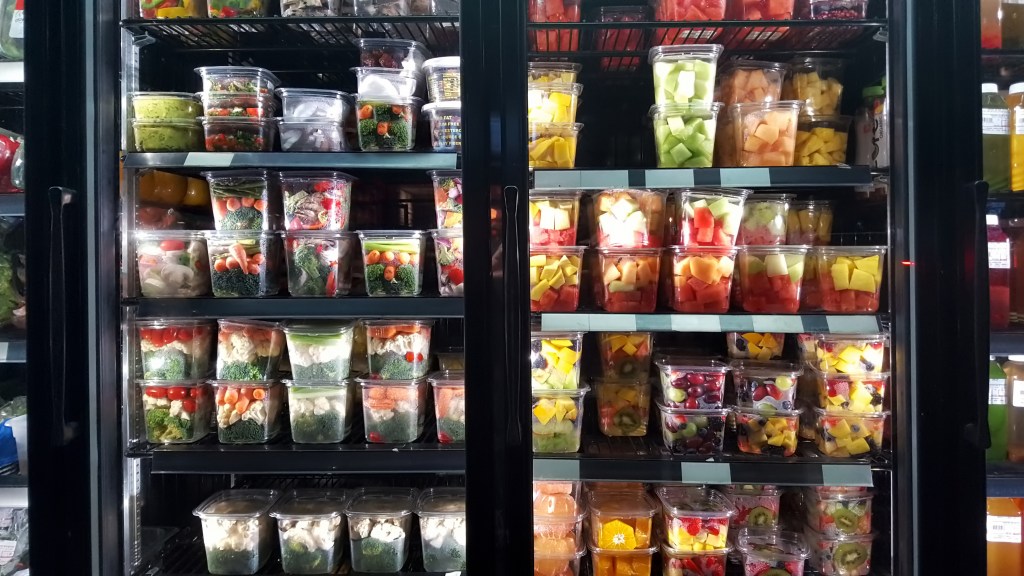What’s on the agenda for your next meeting with your board or investors? Will you be trying to secure new funding to underwrite an expansion of your consumer packaged goods (CPG) product line? Or maybe you’ll be asked to justify your current distribution levels and provide updated return on investment (ROI) projections. Whatever your board or investor meeting will be about, you need to be prepared to answer their most hard-hitting questions.
But as a small or mid-sized CPG manufacturer, how you prepare for these meetings differs from the way you prepare for meetings with your retail buyers. Your board or investors are more familiar with your operations, your product, and your company’s performance to date. That makes it crucial for you to have accurate facts, which means you need a reliable source of data to inform your discussions. Here are three examples of how you can use data to prepare for this scenario.
New product investment
Seeking new funding from your board or investors can sometimes feel like a ‘Shark tank‘ scenario. Not only do you need to communicate your growth goals and how you plan to reach them, you need to do so with confidence. There are several ways to forecast confidently, but they all boil down to two key components:
- Using data to make clear-eyed assessments of past performance.
- Combining those assessments with an analysis of external factors (what your competitors, buyers, and the market are doing) for a more accurate projection.
Here’s an example: Say you’re a manufacturer at a vitamin and supplements company. You want to launch a new vitamin E product, but you need your current investors to back it so you can successfully expand your product line. The first thing you know you need to demonstrate is the new product’s growth potential year-over-year (YOY). So, you look at how similar products performed in the past. Then you evaluate the growth trajectory of all vitamin E products over the past year using a report that shows total supplement sales in U.S. retail markets. Through this process, you start to get a clearer understanding of how your vitamin E product might perform and decide 5% YOY growth is achievable. Finally, when you present the 5% projection to your investors, you do so confidently, because it’s rooted in market and category data. The result? You walk out of your investor meeting with your new product initiative fully funded.
Showing ROI
‘What’s the ROI?‘ is the question you probably hear most often from your board or investors. To make sure you’re in the best position to answer that question, it’s important to have data at your fingertips to calculate returns effectively. You want to be able to show the ROI on all products across multiple retailers and categories, as well as the return on a single promotional initiative. When your board or investors ask to see results, however granular, you need to be able to deliver.
For example, let’s say you’re a manufacturer of a sunscreen product. It’s the end of your first year on the shelf at Retailer Z, and your board wants to know if the $100,000 that was allocated for promotional activity throughout the year was effective in driving sales. You use external data to identify how well your product sold on promotion vs off-promotion, cross-referencing for contextual issues that could skew the results (like an unseasonable heat wave in your region). Using this data, you conclude that the promotional activity drove incremental sales of $150,000, a solid ROI. Perhaps additional investment is justified for next year? You’ve got the data to support it.
Discussing distribution
Distribution, as all CPG manufacturers know, is the metric that has the most direct impact on sales. Your board or investors know this too, and they will almost certainly want to discuss your product’s distribution in your next meeting. Distribution is commonly measured in terms of % ACV, the distribution of all of your brand’s products weighted by the size of the stores that carry them. This is the key figure you should know, not just for your own products, but for your competitors’ products, and for the overall category among the retailers you’re targeting.
For example, let’s say you’re a manufacturer of low-fat yogurt. Your board wants to see if and where there is room for growth. Your yogurt product is currently on shelves at Retailer X and Retailer Y. Having placement at these two retailers means your product’s distribution is 5% ACV of the total U.S. market. But Retailer Z, a new account you’ve yet to enter, makes up 2% of all ACV for low-fat yogurts. If you maintained your current velocity and had the correct promotional support, you could get full distribution in Retailer Z and boost your product’s % ACV substantially. You present this information to your board, and get approval to expand into Retailer Z.
Whether your board or investors are interested in your distribution levels, funding an expansion of your product line or are looking for an update on their ROI, having a reliable source of data to back these discussions is a sure-fire way to keep your CPG business growth on track. NielsenIQ can help you gain access to affordable, easy-to-use, retailer-preferred measurement data, so you can prepare confidently for meetings with your board or investors.
Contact us today to get started.




